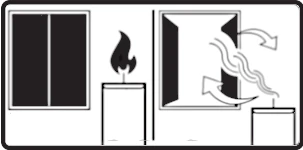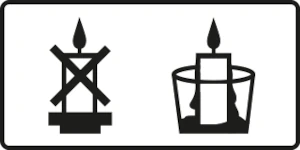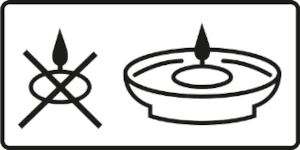handmade candles
- Details
- Written by: admin
- Category: handmade candles
- Read Time: 1 min
- Hits: 64
Welcome to the website of Le Jardin Lunaire (the lunar garden) and our handmade candles.
Here you will find a selection of our hand crafted candles. We use bees wax and mineral wax as well as vegetal waxes (soya, olive, rapeseed) to create vegan candles with zero animal content. Our candles are unperfumed or perfumed with organic essential oils or parfums de Grasse.
Le Jardin Lunaire is based in France, all our candles are made from French ingredients: waxes, dyes and perfumes
We only used essential oils certified organic and EcoCert
 |
 |
We only use parfums from Grasse that are certified cruelty free (not tested on animals), CMR free and phthalate free.
 |
 |
 |
Unlike most commercially made candles Le Jardin Lunaire is transparent about what is in our candles.
- Details
- Written by: admin
- Category: handmade candles
- Read Time: 1 min
- Hits: 32
STANDARD NF EN 15494

This is the European standard for safety against fire risks of candles intended for indoor use. It requires the display of a number of safety standards, indicating the risks associated with candle combustion, the risk of fire, and prventative recommendations.

Never leave a candle unattended

Do not leave the candle burning on or near flammable objects
 Keep burning candles out of reach of children and pets
Keep burning candles out of reach of children and pets

Use a heat-resistant candle holder/base

Do not burn in a draft

Avoid inhaling smoke directly

Cut the wick to x cm (x represents the maximum length of the wick and is defined by the manufacturer)

Keep candles at least x cm apart (x is defined by the manufacturer)

Extinguish the flame. Do not blow it out.

Ventilate the room well after use.

Use a suitable heat-resistant holder for votive-type candles that liquefy as they burn.

Use a suitable bowl filled with water for floating candles
- Details
- Written by: admin
- Category: handmade candles
- Read Time: 2 mins
- Hits: 29
The earliest known candles were used by ancient civilizations such as the Egyptians, Romans, and Chinese. The Egyptians, around 3000 BCE, used torches and rushlights made from reeds soaked in waxy substances like beeswax or tallow (animal fat). The Romans also developed candles from tallow and beeswax. Candles were essential illumination at night and also used for religious ceremonies.
During the Middle Ages, candles became more widespread in Europe, especially among the wealthy and religious institutions. Tallow candles were most common but produced a smoky, foul-smelling flame. Beeswax candles were preferred for their cleaner burn and pleasant aroma but were expensive and limited to the privileged. At this point wicks were repeatedly hand dipped in heated liquid wax to create the candle.
In the Renaissance candle moulds were developed and candle making became more refined. The invention of the candlestick and improvements in wax production enhanced usability. Even so candles remained tallow or bees wax.
The 19th century and the industrial revolution saw significant advancements. The development of paraffin wax, a waste product derived from petroleum, made candles cheaper and more accessible. Also the first wick-making machine was invented which standardized wick production. The advent of mass production allowed for affordable, uniform candles available to all, revolutionizing candle lighting. However another revolution emerged between the 19th and 20th centurty, the invention and development of gas and electrical lighting which marked the start of the end of peoples dependance on candles.
Today with the push of a button we have light! Neon lights of many colours light up the city streets after dark and we are no longer dependant on the candle. At the same time the candle has changed radically. Candles are now available in any colour or many colours. They are often scented. Vegetable waxes have been developed. The modern candle is very different to that used by our ancestors and today the candle is not a necessity item but a luxury item.
Even so the candle remains an important symbol in religious ceremonies today and still impacts the lives of us all, as they have done for thousands of years. Candles still have a huge cultural significance. For those of us who are religious and those of us who are not; the candle creates an atmosphere, energy and ambience that is unique.
Today, candles serve various purposes: illumination, decoration, aromatherapy, religious rituals, and ambiance. Innovations include scented candles, coloured candles and more environmentally friendly options, noteably the development of vegetable waxes.
Candles dates back thousands of years and reflects their importance across different cultures and eras. Here's a brief history:
Candles have evolved from primitive torches to sophisticated decorative and functional items, reflecting technological innovations and cultural practices throughout history.
